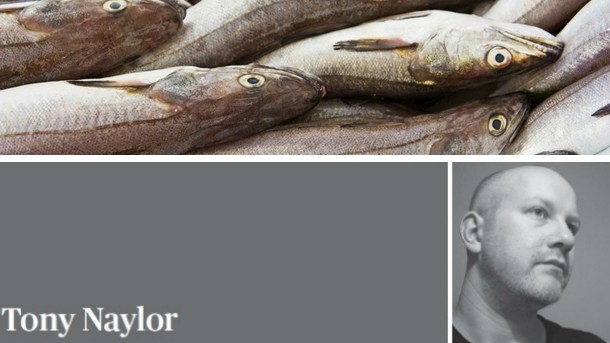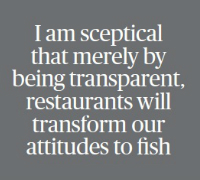MONTHLY COLUMN
Trawling for seafood leaders: Restaurants should lead on fish sustainability

When the Marine Conservation Society [MCS] and restaurant rating body Fish2fork reported on the sustainability practices of high-street chains recently, you might have been forgiven for presuming that their main concern was in arming consumers with information.
‘Lack of clarity on the menu leaves diners in the dark when making seafood choices,’ ran the press release, while Fish2fork MD Tim Glover added: “We are troubled that it is often difficult for diners to know how sustainable a restaurant’s seafood is. We would urge restaurants to make a greater effort to make it clear where their seafood comes from, though we recognise it can be difficult for them to get detailed information from suppliers.”
In a broadly positive report (in particular, the Casual Dining Group’s Café Rouge and Bella Italia were praised) the emphasis on customer awareness struck me as odd.
Naturally, when asked if it wants more sustainability information on menus, the public answers ‘yes’.
But, I get no sense that diners are closely engaged with this topic.
Talking to me by phone, Glover insists: “The onus is certainly not on the customer, it’s on the restaurant.” But, equally, he talks about restaurants creating an educational ‘narrative’ on menus.
The MCS favours more eco-labelling of species and explanation of where it was caught.
Glover uses a fish stew that contains mixed seafood with varying sustainability credentials as an example of a product where restaurants should be clearer about what they are serving.
“The common area where even good [chain restaurants] could improve is in their transparency,” he says.
Transparency, eco-labelling and customer education seem like noble aims. But I wonder about their real-world efficacy.
Sustainable seafood is a bewildering subject of constantly changing updates that even motivated chefs struggle to stay up with, much less punters.
Diners may be open to new fish species sold in the right way (“I never come across resistance,” Jim Cowie, chef-owner at Captain’s Galley restaurant in Scrabster once told me), but their product knowledge – about, for instance, the difference between farmed Gigha halibut (fine) and wild Atlantic halibut (very bad indeed) – is almost non-existent.
In a 2014 Marine Stewardship Council survey, just 6% of people had seen eco-labelling on menus.
Given that low base, I am sceptical that merely by being transparent, restaurants will (even slowly) transform our attitudes to fish. It is impractical for restaurants to clutter menus with ever-changing status reports, eco-labels and geographic origin details for different fish, much less back that up with staff training that might (not) gently nudge diners towards coley rather than farmed king prawns.
Many diners will simply blank out this boring detail. Even ethical diners do not want to read much further than ‘all fish comes from sustainable sources’ and, preferably, some guarantee of that by an external auditing body.
I favour a radical approach. Our oceans are in crisis. That requires immediate intervention. Venues need to stop serving endangered fish.
Leaving the decision to customers is a dereliction of duty. Rather than cajoling them to make the right choice (with tedious menu notes), kitchens should dictatorially take that choice away from customers.
If a kitchen is clever and creative, the loss of some unsustainable fish may barely be noticed. It is a challenge but, ultimately, there is a moral imperative to act.
As Derek Marshall, the chef-owner at eco-friendly Glasgow seafood restaurant Gamba, says: “You’ll get one customer a week that will comment on it. Sometimes I think we’re fighting a losing battle, but we’re not because we’re doing what we think is right.”
This column first appeared in the March 2017 issue of Restaurant Magazine. Subscribe here from just £70 per year!























